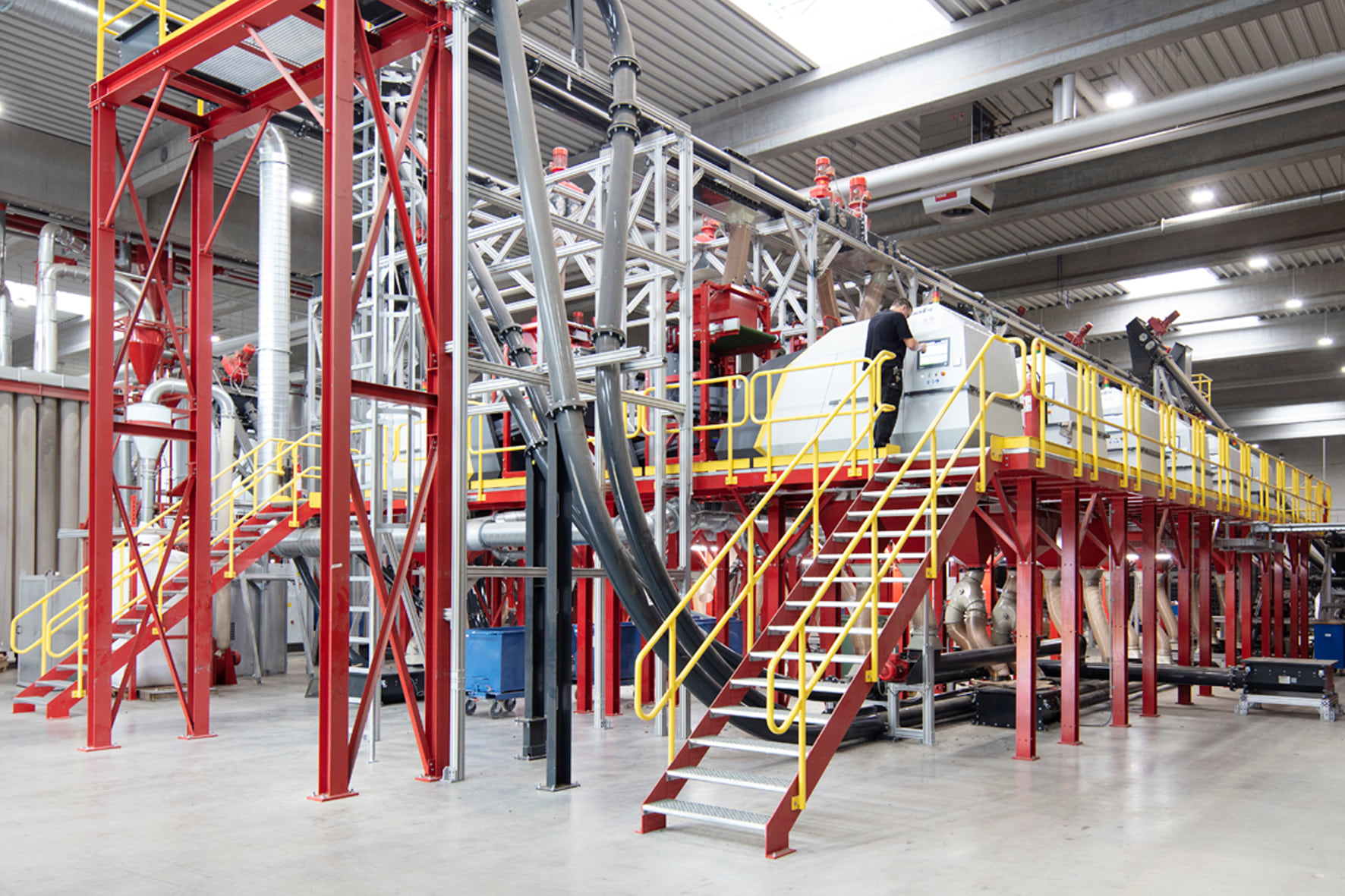
About 70% of the material in Graf products is recycled, thanks to the company’s convictions. Graf began back in 1980 by producing the first water barrel in recycled plastic. To further increase the recycling rate, Graf has opted for Steinert sorting machines for difficult-to-sort plastics, which return this supposedly residual fraction to the recycling economy. “Our aim is to use 95% secondary raw materials in our products in five years’ time,” says Jörg Drägert, Head of Raw Materials Management at Graf.
In 2017, Graf received confirmation of funding from the Environmental Initiative Programme of the German Federal Ministry for the Environment, Nature Conservation, Nuclear Safety and Consumer Protection. Graf had demonstrated that it was possible to sort material fractions that had previously been considered low-value and that were usually used thermally or recycled as mixed plastics, and that these materials could be upgraded to high-quality recycled plastics. The focus is on black plastics. Conventional optical sorting systems are unable to detect these plastics, making them a seemingly insoluble problem for recyclers.
The sorting process is made possible by Steinert technology, which not only positively separates black plastics, but also sorts them accurately. A total of 16 UniSort sorting machines with hyperspectral imaging (HSI) sensors are in use at Graf’s raw materials competence centre in Herbolzheim, Germany, where they generate PP and HDPE fractions in black and light for subsequent regranulation. In addition to the UniSort Black, the UniSort Finealyse and UniSort BlackEye sorting machines, which are optimised for sorting small particle sizes, play a key role here.
The sorting process is made possible by Steinert technology, which not only positively separates black plastics, but can also sort them precisely. A total of 16 UniSort sorting machines with hyperspectral imaging (HSI) sensors are in use at the Graf raw materials competence centre in Herbolzheim, Germany, where they produce PP and HDPE fractions in black and light for subsequent regranulation. In addition to the UniSort Black, the UniSort Finealyse and UniSort BlackEye sorting machines, which are optimised for sorting small particle sizes, play a key role here.
Using near infrared (NIR) sensors and a colour camera, the UniSort Finealyse can sort plastic flakes by type and colour. A high-speed belt combined with a directed air stream stabilises even the smallest objects for the best possible quality levels with minimal over-sorting. The UniSort BlackEye is based on the same design. It has a sensor for the middle infrared (MIR) frequency range. This allows black polyolefins (PO) to be accurately sorted into their constituent parts, such as polyethylene (PE) and polypropylene (PP), but also polystyrene (PS) and acrylonitrile-butadiene-styrene (ABS) copolymers.









